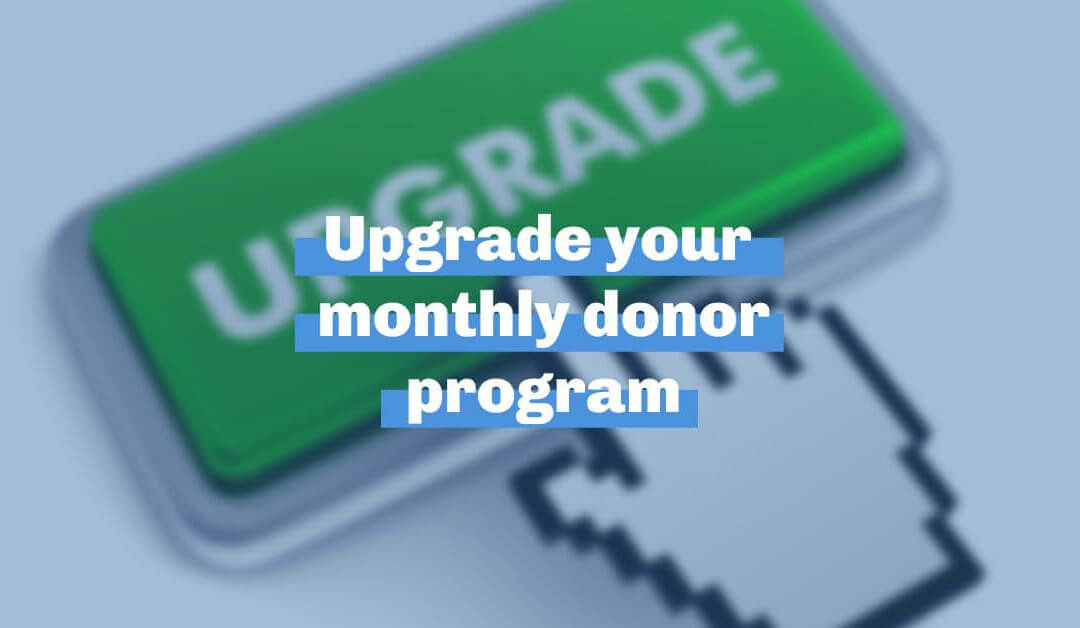
by Kerry Jones | Jun 17, 2022 | Fundraising
Monthly donors are magic for nonprofit organizations. On average, monthly donors contribute the largest—and most consistent—portion of the donation pie. But these power players come with a catch: Acquiring recurring donors takes more patience and planning than snagging the occasional one-time gift.
That’s where we come in. We’ve compiled a series of resources that offer foolproof, step-by-step instructions to help you develop the gift program that, well, keeps giving.
Build a monthly gift program that works
Let’s start with the basics: goals, outlines, and knowing your donors. Asking yourself targeted questions about the goals of your campaign is a great way to trim unnecessary tasks from your program agenda. What’s the average monthly gift amount you’re aiming for? How many monthly donors would you like to accrue in a year’s time?
Developing an outline for your monthly giving program framework will help you clearly define expectations at every step of the process. How will you measure success and how often? When do you plan to send your donors an email or give them a call? What content will you include in your outreach?
Then, an investigation of your donors’ motivations and similarities will help you learn how to both retain your current gifts and find more people interested.
Current donors don’t want their generosity stretched by monthly giving requests that appear to demand too much. Luckily, there is a way to tastefully invite donors to your program without appearing inconsiderate. The key is to rely on carefully crafted segments: monthly givers, major donors, and smaller donors, for example.
Plan your monthly donation appeal strategically, ask for monthly gifts when you have time to cultivate donors over time, and be sure to acknowledge existing donors’ past support. And don’t forget the most simple steps, like adding ‘one-time gift’ or ‘monthly gift’ check boxes to every online donation form and reply device.
If the gist of your fundraising appeal is “donations help us,” you probably won’t get much mileage out of your campaign. It’s time you start thinking like a donor. Asking what’s in it for them? is step one in boosting your campaign’s creativity with original incentives. Try setting a fundraising target, making a campaign video, or setting up a rewards program with tangible benefits. Abundant bonuses (and LOTS of gratitude) for monthly givers will keep their motivations strong and their subscriptions active.
Knowing your success metrics will help you evaluate if your monthly giving campaign is meeting its goals or needs a remodel. Learn how to calculate donor retention and attrition rates, donor lifetime value, and gift retention. And for campaigns in need of a new suite of retention strategies, test out thank you email templates and impact-forward email appeals. Your spreadsheets and annual reports will thank us.
When your donors sign up, don’t miss the opportunity to gather data from them about their likelihood of giving for the long term—or losing interest quickly. Evaluating their sign-up experience, as well as a few other indicators, can help you extrapolate trends. Do donors tend to unsubscribe if they are over or under a certain age? Or do limitations to your payment method cause donors to drop out? Learning the factors that are and are not within your control can help you optimize your users’ experience.
Learn from these nonprofits doing the monthly-gift-thing well
Learning the tools to build your campaign is half the fun—but diving into what’s possible is a great way to get your team hyped. These nonprofits lead by example with creative approaches to their monthly gift campaigns. Elevate your strategy by borrowing monthly gift ideas from the best in the business.
This comfort care home sent special personalized cards to new donors right away to communicate the personal impact they have.
At Hildegard House in Louisville, Kentucky, their mission is to provide compassionate care for individuals who are isolated as they experience the end of their lives. When their executive director learned the benefits of monthly giving, she first became a monthly donor elsewhere to learn the dos and don’ts of donor communication. She quickly saw the benefits of personalization and consistency, so she maximized connection with regular newsletters, holiday cards, event invitations, and in-person thank-yous.
This family service provider opened their monthly giving appeal with a personal story both compelling and uplifting.
Jewish Family and Children’s Services offers necessities and life-saving care to vulnerable people in crisis. Their email is the paragon of concise storytelling that hits the reader fast with emotions. They first thank donors and welcome them into their giving community. Then they share the story of their client, Vivienne, who struggled to buy groceries with her heart condition and no family. They shared what it meant to Vivienne when JFCS showed up to her house with groceries and aid. This example ropes readers in quickly and shows how their organization is the answer to their clients’ needs. Then, they share how monthly gifts can continue to provide care—and how to start giving.
This safe water and HIV/AIDS support organization uses page-filling images to hook the donor, then progress bars and impact blocks to connect readers to their projects.
Blood:Water fights the HIV/AIDS crisis and water crisis in Africa by partnering with local grassroots organizations for sustainable development. The NGO considers itself a “development organization” and centers its long-term impact in its organization’s design. Naturally, their email visuals also had to be impact-forward and tell a gripping story. The reader first sees an explanation of the crises laid over commanding photos of natural water. They then see impact blocks explaining the local organizations they support and the ways donors can choose to help. Finally, their progress bar encourages donors to give by providing a specific amount they are working towards—and emphasizing their proximity to that goal.
This girls’ education nonprofit marketed monthly donors not only as generous individuals but as a valued community.
With a few changes, you can transform a group of people with nothing in common into an exclusive club. That’s what She’s the First did when they started their monthly giving program. The nonprofit works to support girls’ education and rights, so they called their monthly donors the “Front Row” after the most excited students in the classroom. Within the Front Row, they also created tiers for different gift groups including “Girl Champions” for donors giving over $100/month and “Equality Advocates” for donors giving over $50/month. Most importantly, donors in each group are listed and celebrated in each email—with abundant gratitude for their contribution to the cause.
This global health organization launched its monthly giving program with branding distinct from its other campaigns.
Watsi is an international healthcare organization that provides health care to people worldwide by funding a series of local health teams based around the globe. They set up their monthly gift program, called the Universal Fund, with a new branding initiative that dominates their website landing page. They gained more traction promoting their Universal Fund in a way that’s visually distinct from their organization, including inspirational photos and background information. Critically, Watsi also attracts sustainers by giving them information about the individuals their donations are helping—and sending follow-up emails on each patient’s care and progress. Compared to Watsi’s more general marketing initiatives, the Universal Fund employs a dignified and intimate look into the care its patients receive.
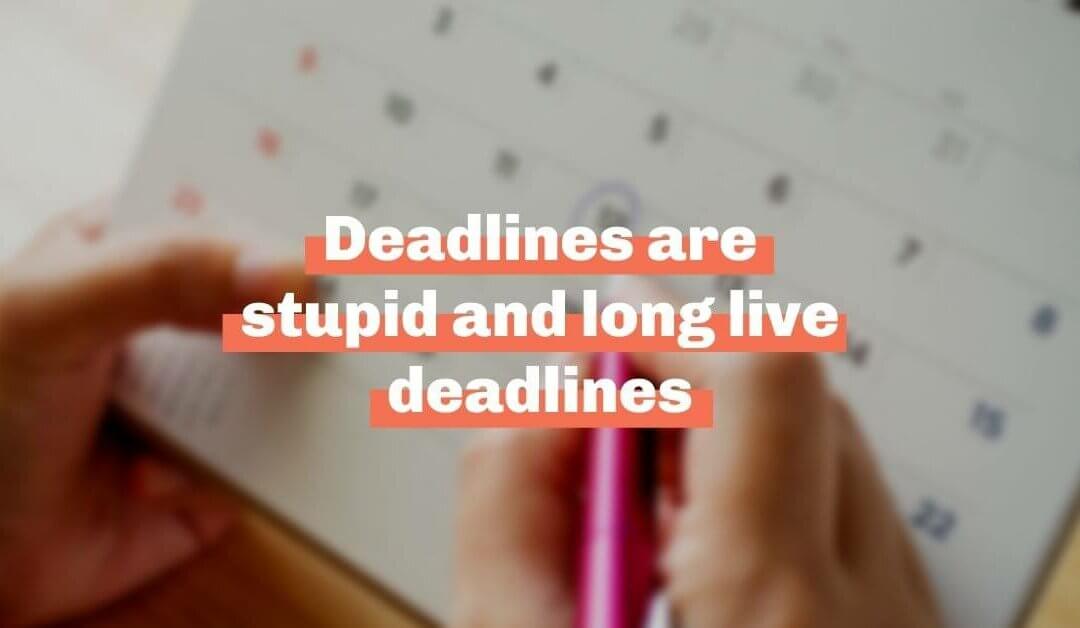
by Allison Kooser | Aug 26, 2021 | The Intro
All too often, we live in an either/or culture. It’s this way or that way. This decision or that one.
Here at Swell+Good, we are getting better and better at choosing and.
And while there are countless very serious topics that could benefit from a good “and” conversation, today, we’re thinking about one of our favorites (that is, admittedly, not all that serious at all):
Deadlines are stupid and long live deadlines.
We pick both.
Look, we get it. Deadlines are almost always self-imposed and arbitrary. We pick a date and then rush to meet the goal we set for ourselves. Do our donors care? No. Would it matter if we picked the next day, or the day after that? In most instances, probably not.
In our most creative moments, we find ourselves nodding along to ideas presented by Basecamp founder Jason Fried, who refuses to set goals and instead just “does the best he can.” His book, It Doesn’t Have to be Crazy at Work, challenged us to reconsider so many of our built-in business practices.
But then we remember something else:
We suck without deadlines.
Having checkpoints (even arbitrary ones) keeps our team moving forward. And when we’re working on deliverables that impact our colleagues and clients, meeting those key dates is an essential quality of being a good partner.
As much as we want to live in the freedom of doing good work, we know that, at least for us, timelines matter. Goals matter. Milestones matter. And yes, deadlines matter, too.
So we choose and.
Yes, deadlines are made up. They’re random. And they’re often pretty pointless.
And also, we love them. They help make our work better—or at least help us get our work done. And they help ensure that we keep moving forward.
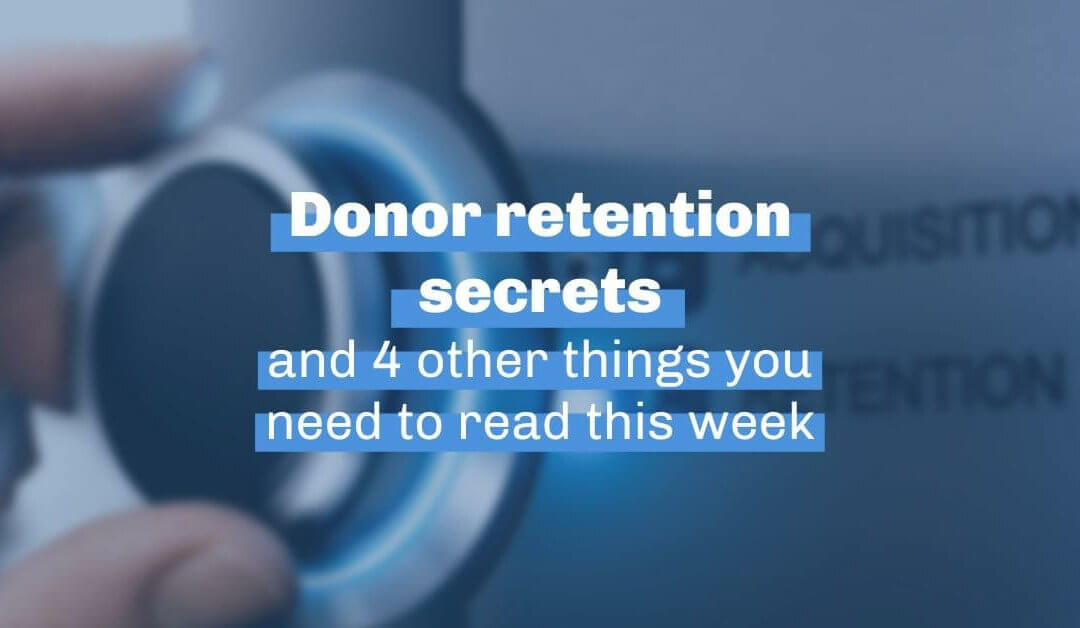
by Ian Haisley | May 14, 2021 | +Good Newsletter
1. Keeping your donors is 👌 easier than it seems.
Tired of chasing lost donors? You aren’t alone. Nonprofit donor retention rates have been below 50% for the past decade. Learn what you can do to keep your donors’ eyes off the exit sign and treat them like friends we will see again soon.
Learn 5 secret nonprofit donor retention strategies. [via clarification]
2. Hit 🔃 refresh on your messaging.
You’re clever, funny, and honest. You know it, we know it, and your audience should know it, too! Keep your message stays relevant and fresh with helpful tips like using different voices from your staff, cracking a joke here and there, and sharing an opinion.
Don’t be afraid to try something new. [via Nonprofit Marketing Guide]
3. Adapt your Facebook campaigns for 📱 iOS 14.
In addition to new emojis, the new iOS 14 means updated privacy and data use regulations that will impact Facebook campaign performance. You may have already noticed shifts in Ads Manager — and more changes are certainly incoming! Nervous about adapting to the new normal? Here are some tips to navigate the update.
How iOS 14 will impact your Facebook ad campaigns. [via Portent]
4. Create evergreen 🌱 content that stays fresh for years.
If you’re looking to create marketing materials that will work for the long haul, lean into the art of evergreen content. Answer the questions your audience asks most, think about what people search, and craft stories that will never go out of style.
Evergreen doesn’t have an expiration date. [via Neil Patel]
5. Keep your audience 🗓 on time.
If you’re hosting a virtual event on a platform like Zoom or Google Meets, the Add to Calendar app will help ensure no one misses out. This handy tool allows you to create links that will let your audience quickly save your events onto various calendars and get an automatic notification as it’s about to start. You can create links and event reminder buttons for Google Calendar, Outlook, Microsoft Office 365, and Yahoo! Calendar, which is particularly helpful when you have audience members working across multiple platforms.
Add to calendar. [via Labnol]
This issue of +good was written and produced by Allison Kooser, Ian Haisley, Sydney Bartlett, Kerry Jones, Lindsey Lincoln, and Katie Powers.
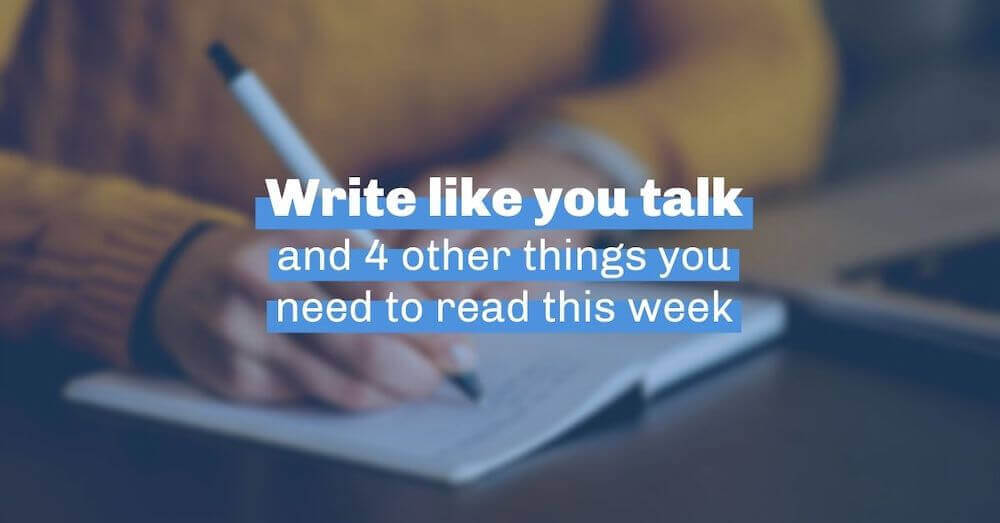
by Ian Haisley | Apr 2, 2021 | +Good Newsletter
1. TikTok for 👍 good.
TikTok has over 850 million active users and has become synonymous with dance challenges, cooking hacks, and Gen Z. But for nonprofits, the video-sharing platform presents a unique opportunity to tell stories and connect with new audiences—and promote fundraising, too!
Find out what the cool kids are up to. [via Swell+Good]
2. Write ✍️ like you talk.
Complicated sentences and confusing jargon are putting your audiences to sleep. Wake them up with conversational writing. Channel your inner Hemingway with short, snappy sentences. Toss your audience a question. Skip the jargon. Here are 12 ways to grab your reader’s attention.
Master the art of conversational content. [via Content Marketing Institute]
3. Showing 👀 instead of telling.
Data has the power to convince a customer to take action or make a purchase, but it can often feel impossible to decipher. The solution? Data visualization. Using graphics like charts, maps, and scatter plots makes your numbers tell a story. Make critical information more digestible and capture your readers’ attention more effectively with these helpful tips.
How to make a chart that tells a story. [via Neil Patel]
4. The basics of NFTs ⛓ in five minutes.
Non-fungible tokens…yes, we know, you’re probably already confused. What are they? How do they work? Why should you care? Ownership of digital objects can be fun and profitable if you know what you’re doing. Watch this video for a quick, simple rundown of the latest cryptocurrency craze.
What is an NFT? [via Mashable]
5. Win back 🥇 your biggest donors.
When it comes to creating a successful fundraising strategy, winning back lapsed donors pays off in a big way. On average, they’re more likely to give larger gifts, have better retention rates, and are less expensive to acquire than new donors. But not all reactivation appeals are created equal. The best way to win back a lapsed donor is to send them your best fundraising materials and think strategically about the messaging you deploy to reach them.
Don’t say goodbye to lapsed donors. [via Future Fundraising Now]
This issue of +good was written and produced by Allison Kooser, Ian Haisley, Sydney Bartlett, Lindsey Lincoln, and Katie Powers.
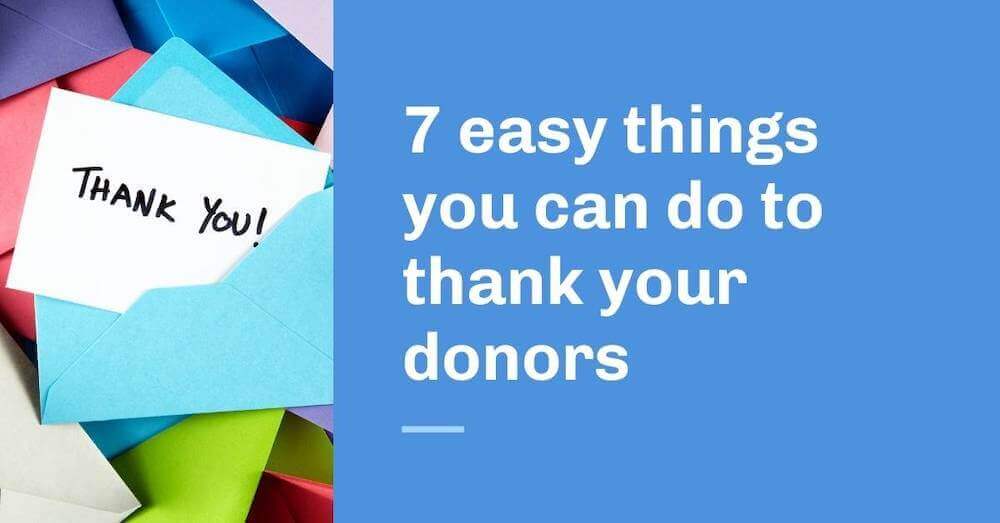
by Ian Haisley | Mar 22, 2021 | Donor Engagement
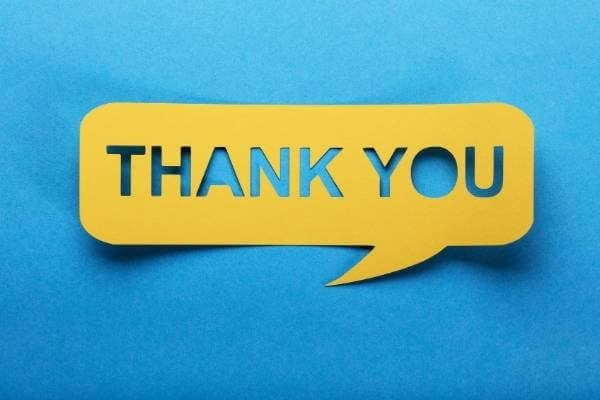
We all know that it is essential to say thank you. It is a magic word, after all.
Say thank you when someone opens a door for you. Say thank you when a cashier hands you your change. And most importantly, say thank you when someone donates to your organization.
We also know that you should thank your donors seven times.
You’ve done the work. You’ve set up an incredible thank you stream that includes a thank you in their automated receipt, a thank you a few days later via email, and a written letter that expresses your gratitude—and maybe even requests a second gift. (If you haven’t, drop us a note, we’d be happy to help!)
But you know what? So has everyone else.
So how do you stand out? How do you go beyond checking seven gratitude boxes and actually make your donors feel thanked?
We’ve compiled a list of our favorite ways to say thank you—including the ones that donors have told us they appreciated most. Feel free to use any of these, but remember to make them your own. A good thank you needs to feel authentic and be from the heart.
7 easy ways to say thank you to donors:

1. Drop a postcard in the mail.
You can support the USPS and make your donors feel appreciated at the same time. It doesn’t even have to be a branded postcard—a postcard from somewhere you’ve traveled or the city where your organization is based will work just fine. Handwritten mail is magic, and it will show your donor that you genuinely care.
2. Send them a book.
It can be one you’ve read recently or one that is related to your work (even tangentially). Include a personal thank-you note explaining that you thought your donor would enjoy the book. Maybe inscribe a short message in the jacket. Either way, they’ll think of you and your organization every time they pick it up.
3. Record a cell phone video.
Don’t be camera shy—this video isn’t going on national TV. Gather a few of your colleagues and send a short video saying thank you with lots of energy. Be sure to use the donor’s name so that they know that it was made just for them.
4. Make thank you magnets.
Everyone’s fridge loves magnets. How many do you have on your fridge right now? Go, count. I’ll wait. For some reason, magnets are the last thing to get Mari Kondo’d in any house. (They definitely spark joy!) Add your organization to the mix and create a magnet that donors will walk by and see every time they open the fridge for a snack. They’ll use your magnet to hold up a picture of their family, and your organization will stay top of mind.
5. Send a photo.
When it comes to saying thank you, a picture really can be worth a thousand words. Share a photo of someone who has felt the impact of their donation—and go one step further by adding a short note on the back of the card. It will feel like it’s coming from a good friend, and I promise they’re going to remember.
6. Shoot a quick “feeling grateful for you” text message.
This one takes almost no work at all. We both know your phone is in your hand right now. Go on, pick it up. Send a short message to one of your donors and tell them that you’re grateful for their support. That’s it, nothing more complicated than that.
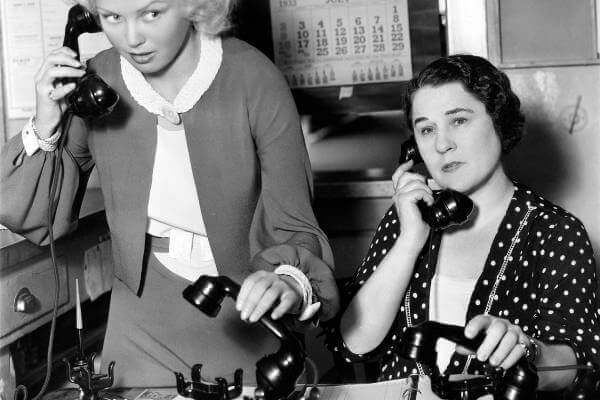
7. Host a Thank-a-thon.
Of everything on our list, this is the most complicated. It is also a ton of fun. Plan for an all-day staff and volunteer-led effort to call and thank all of your donors. Make lists, check them twice. Make a call, say thank you, end the call. (For real, only say thank you. Don’t make an ask.) Speak to them directly or leave a message— it takes 30 seconds and then you’re dialing the next donor. Here, I’ll write the script for you:
“Hi <INSERT DONOR NAME HERE>, this is <INSERT YOUR NAME HERE>. I’m calling from <INSERT ORGANIZATION NAME HERE>, and I just wanted to thank you for your recent donation. We are so grateful to have your support. Have a fantastic <DAY/WEEK/WEEKEND/HOLIDAY>! Buh bye now.”













